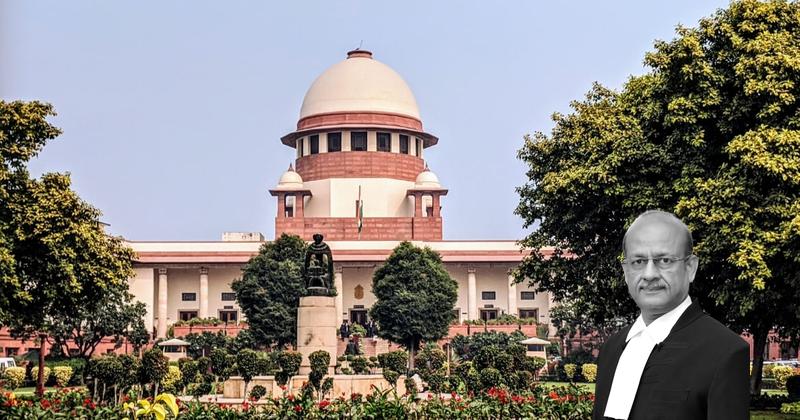The property has been described in the Schedule to the sale deed which reads thus: “SCHEDULE OF THE PROPERTY” Part Portion of Free Hold Site
Also Read: https://newslaw.in/case-type/criminal/protection-of-public-servants-in-criminal-proceedings/
No 49 Civil Station, Allahabad of which Nagar Nigam
No is 19 Old, 77/29 New, and 19-A Old 79/31 New, Lal Bahadur Shastri Marg (Elgin Road), Allahabad measuring 7818.00 sq.mt. According to their case, in the year 1939, Bungalow No.19, together with appurtenant land and outhouse as well as cottage no.19-A, was taken on rent by the first appellant’s father.
Prior to the execution of a fresh agreement for sale, on 29 September 2010, the appellants filed an application under Section 31 r/w 32 of the Indian Stamp Act, 1899 (for short ‘the Stamp Act’) for adjudication of the stamp duty payable on the sale deed by forwarding a copy of the proposed sale deed. Two notices were issued to the appellants on 8 February 2011 and 15 April 2011 by the Assistant Stamp Commissioner in the exercise of powers under Section 47-A of the Stamp Act, informing the appellants that the Assistant Stamp Collector was considering the question of payment of appropriate stamp duty on the sale deed. The Collector came to the conclusion that on the date of the sale deed, the market value of the sale deed property was Rs.19,23,08,305/- on which stamp duty of Rs.1,34,61,630/- was payable. While affirming the market value fixed by the authorities, the High Court granted limited relief to the appellants vide judgment dated 23 January 2013. The learned senior counsel submitted that the first appellant’s father was already inducted in the sale deed property as a tenant.
He submitted that while determining the market value of a property in possession of a tenant, when the property is sold to the tenant, the market value has to be apportioned as per the principles laid down in several decisions of this Court in connection with fixation of the market value of the acquired land under the Land Acquisition Act, 1894. He submitted that as per the compromise between the vendor and the appellants, the consideration agreed to be paid by the appellants was of Rs.1 lakh plus the release of 1/3 of the property. Raizada, learned senior counsel, submitted on behalf of the State that stamp duty payable by the appellants is to be calculated as per the prevailing market value of the sale deed land on the date of the execution of the sale deed.
Also Read: https://newslaw.in/case-type/criminal/disclosure-and-recovery-of-weapon-a-key-factor-in-conviction/
The learned senior counsel submitted that the determination of rateable value for the purposes of determination of property taxes is always made on the basis of hypothetical rent which the property may fetch. In the Central Act, Article 23 a stamp duty is payable on the value of the consideration of such conveyance as set forth in the sale deed. ” So this provision which is applicable to the case in hand provides that if the market value of the immovable property is higher than the value of the consideration as set forth in the deed of conveyance, the stamp duty will be payable on the market value of the immovable property which is the subject matter of the conveyance deed.” exempted under No.62 – (a) if relating to immovable property where the amount or value of the consideration of such conveyance as set forth therein or the market value of the immovable property which is the subject of such conveyance, whichever is greater does not exceed Rs.500. In other words, the rule of literal construction must be applied while interpreting a taxing statute. The contention of the learned counsel for the State that as per Section 17 of the Act, the market value has to be taken into consideration because Section 17 stipulates that all the instruments chargeable with duty and executed by person of India shall be stamped before or “at the time of execution”.
But Section 47-A of the Rajasthan (Amendment) Stamp Duty Act contemplates that in case it is found that properties are undervalued then it is open for the Collector (Stamps) to assess the correct market value. Moreover, the market value mentioned in the agreement for sale or the market value prevailing on the date of the agreement or the market value prevailing on the date on which the bargain was struck is of no relevance for deciding the stamp duty. Therefore, we have no manner of doubt that the appellants were under an obligation to pay stamp duty calculated on the market value of the sale deed property on the date of execution of the sale deed. (b) When the deficit stamp duty required to be paid under clause (a), is paid in respect of any instrument and the instrument is presented again for registration, the registering officer shall certify by endorsement thereon, that the deficit stamp duty has been paid in respect thereof and the name and the residence of the person paying them and register the same. (2) Without prejudice to the provisions of sub-section (1), if such Registering Officer, while registering any instrument on which duty is chargeable on the market-value of the property, has reason to believe that the market-value of the property, which is the subject of such instrument, has not been truly set forth in the instrument, he may, after registering such instrument, refer the same to the Collector for determination of the market-value of such property and the proper duty payable thereon- (3)
(4) The Collector may, suo motu, or on a reference from any court or from the Commissioner of Stamps or an Additional Commissioner of Stamps, or a Deputy Commissioner of Stamps or an Assistant Commissioner of Stamps or any Officer authorized by the Board of Revenue in that behalf, within four years from the date of registration of any instrument on which duty is chargeable on the market value of the property, not already referred to him under sub-section (1) or sub-section (2), call for and examine the instrument for the purpose of satisfying himself as to the correctness of the market value of the property which is the subject of such instrument and the duty payable thereon and if after such examination, he has reason to believe that the market value of such property has not been truly set forth in the instrument, he may determine the market value of such property and the duty payable thereon in accordance with the procedure provided for in sub-section (3).
(4) If on enquiry under sub-section (2) and examination under sub-section (3) the Collector finds the market value of the property – (i) truly set forth and the document duly stamped, he shall certify by endorsement that it is duly stamped and return it to the person who made the reference; ii) not truly set forth and not truly stamped, he shall require the payment of the proper duty or the amount required to make up the deficiency in the same together with a penalty of an amount not exceeding four times the amount of proper duty or the deficit portion thereof. (4A)
The Collector shall also require along with the deficit stamp duty or penalty required to be paid under clause (ii) of sub- section (4), the payment of a simple interest at the rate of one and half per cent per mensem on the amount of deficit stamp duty calculated from the date of execution of the instrument till the date of actual payment: Provided that the amount of interest under this sub-section shall be recalculated if the amount of deficit stamp duty is varied on appeal or revision or by any order of a competent Court or authority. After inspection of the sale deed property, the Assistant Stamp Collector came to the conclusion that the description of the property in the sale deed was incorrect. It is apparent that if the property subject matter of the sale is in possession of the vendor himself, the bona fide purchaser will offer more price for the property than the price which he may offer for a similar property which is in possession of a tenant.
If no comparable instances are found, the market value can be fixed of the property in possession of tenants by making an appropriate deduction from the market value of a comparable property in which there are no tenants. meter is to be taken as the market value of the sale deed land, necessary deductions will have to be made from the market value as the appellants were already in possession of the sale deed land as tenants. If the Assistant Stamp Collector comes to the conclusion that the market value of the land and structures is lesser than what was determined earlier by the Assistant Stamp Collector, the appellants will be entitled to a refund of the excess amount paid with interest at the rate of 8% per annum from the date on which the amount was paid till the date on which the refund is made. Hence, we set aside the impugned judgment of the High Court as well as the judgment of the Assistant Stamp Collector and the Appellate Authority and remand the case for fresh consideration to the Assistant Stamp Collector. ……………………..
Also Read: https://newslaw.in/case-type/criminal/legal-analysis-of-judgement-on-discharge-in-a-murder-case/
J.
Case Title: SHANTI BHUSHAN (D) THR. LR. Vs. STATE OF U.P (2023 INSC 425)
Case Number: C.A. No.-008388-008388 / 2017



